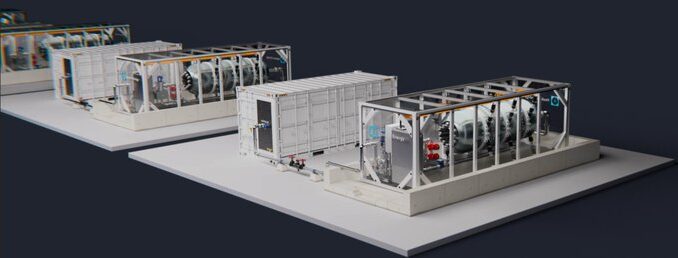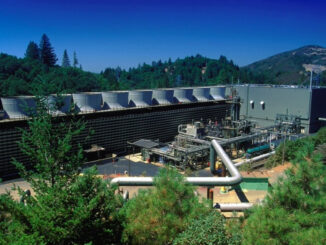
In a bold step toward energy independence and resilience, the U.S. Army has unveiled Project Janus, an ambitious initiative to install micro nuclear reactors across multiple military installations. Announced on October 14, 2025, during the Association of the United States Army (AUSA) Annual Meeting, the program aims to deploy up to 18 reactors—two at each of up to nine bases—by 2028.
This move not only bolsters national defense against growing threats to the civilian power grid but also signals a massive win for the nuclear energy sector, which has long advocated for advanced, modular technologies to meet modern demands.
The Genesis of Project Janus
Named after the Roman god of transitions and gateways, Project Janus represents a pivotal shift in military energy strategy. The program builds on lessons from earlier efforts like Project Pele, which developed the first electricity-producing Generation IV nuclear reactor outside of China.
Under Janus, the Army will partner with the Defense Innovation Unit (DIU) and commercial entities to field microreactors capable of operating entirely off the civilian grid. Each reactor will generate less than 20 megawatts of power, sufficient to support critical base operations such as command centers, data facilities, and essential infrastructure.
The reactors are designed to be modular and transportable—compact enough to fit on a flatbed truck or even be airlifted via C-17 aircraft for rapid deployment.
This portability addresses vulnerabilities in traditional energy supplies, particularly in scenarios involving cyberattacks, natural disasters, or geopolitical conflicts that could disrupt the grid. As threats to U.S. energy infrastructure escalate, Janus ensures that military bases remain operational and self-sufficient.
While specific bases have not yet been publicly disclosed—additional details are expected in the coming weeks—the installations will be domestic U.S. sites, focusing on enhancing resilience for national defense missions.
The first phase prioritizes up to nine locations, with two reactors per site, totaling 18 units. These will be commercially owned and operated, but the Army and Department of Energy (DoE) will oversee fueling, regulation, and the full uranium fuel cycle to maintain safety and security standards.
Backed by Executive Order 14299
Project Janus is directly tied to Executive Order 14299, “Deploying Advanced Nuclear Reactor Technologies for National Security,” signed by President Trump on May 23, 2025.
This order mandates the rapid advancement and deployment of nuclear technologies to safeguard critical defense facilities, AI infrastructure, and other national security assets against energy disruptions.
Key directives from EO 14299 include:Designating the Secretary of the Army as the executive agent for DoD nuclear energy programs, requiring the operation of at least one DoD-regulated nuclear reactor at a domestic military base by September 30, 2028.
Coordinating efforts between the DoD, DoE, and the Department of State to support reactor design, construction, and international compliance.
Allocating resources for uranium fuel, including releasing at least 20 metric tons of high-assay low-enriched uranium (HALEU) to fuel private-sector projects.
Streamlining environmental reviews under the National Environmental Policy Act (NEPA) and prioritizing security clearances for nuclear-related personnel.
Promoting U.S. nuclear exports through new international agreements and financing strategies to maintain global technological leadership.
The order emphasizes private-sector innovation, enabling companies to invest in microreactors while leveraging federal oversight. This framework not only accelerates deployment but also positions the U.S. to counter adversaries’ advances in nuclear energy.
A Boon for Nuclear Energy and National Security
Project Janus is a game-changer for the nuclear industry, which has faced regulatory hurdles and public skepticism in recent decades. By adopting micro modular reactors (MMRs), the Army validates these technologies as safe, efficient, and scalable alternatives to fossil fuels. Unlike traditional large-scale plants, MMRs require infrequent refueling—potentially every few years—and produce zero emissions, aligning with broader sustainability goals.
For the military, the benefits are clear: enhanced energy resilience in an era of hybrid warfare. Bases powered by Janus reactors could withstand prolonged grid outages, supporting everything from troop readiness to advanced AI operations. This is particularly vital in regions like the Indo-Pacific, where logistical challenges amplify energy vulnerabilities.
Companies like Hadron Energy, which specializes in 10 MWe MMRs, stand to gain significantly. As noted by Hadron’s CEO Samuel Gibson in a recent X post, the program opens doors for commercial providers to secure contracts, attract investment, and expand into civilian markets such as remote mining or data centers.
Other players in the space, including those focused on uranium supply and fuel processing, will see increased demand as the nuclear supply chain ramps up. Visually, these reactors resemble compact, containerized units—think shipping containers housing advanced turbine and cooling systems, as depicted in conceptual renders from industry leaders. Such designs emphasize mobility and minimal footprint, making them ideal for military applications.
Looking Ahead: Nuclear’s Renaissance
Project Janus isn’t just about powering bases; it’s a cornerstone for America’s energy future. By 2028, these 18 reactors could pave the way for hundreds more across defense and civilian sectors, reducing reliance on vulnerable grids and fossil fuels. In a world where energy security equals national security, this initiative is not only timely but essential.As details on the specific bases emerge, Energy News Beat will continue to track developments. For now, one thing is certain: nuclear energy is back, and it’s powering the fight for a resilient tomorrow.
I have reached out to the team at Hadron Energy for an interview with their CEO, Sammuel Gibson. We will keep you posted as that request rolls through.
Got Questions on investing in oil and gas? Or do you have a Tax Burden in 2025?
Crude Oil, LNG, Jet Fuel price quote
ENB Top News
ENB
Energy Dashboard
ENB Podcast
ENB Substack







